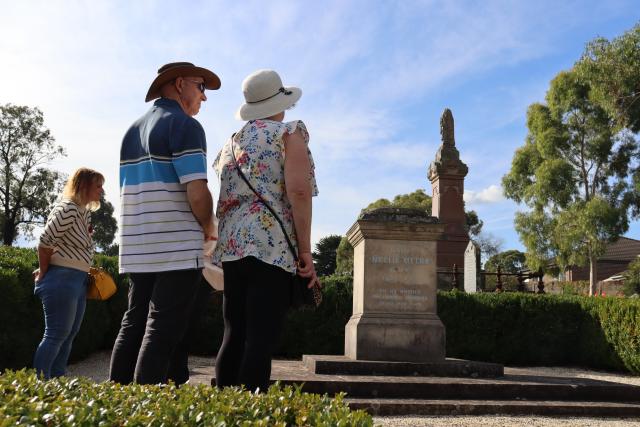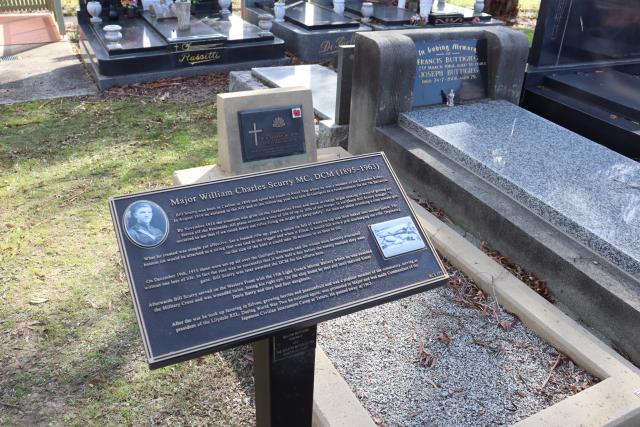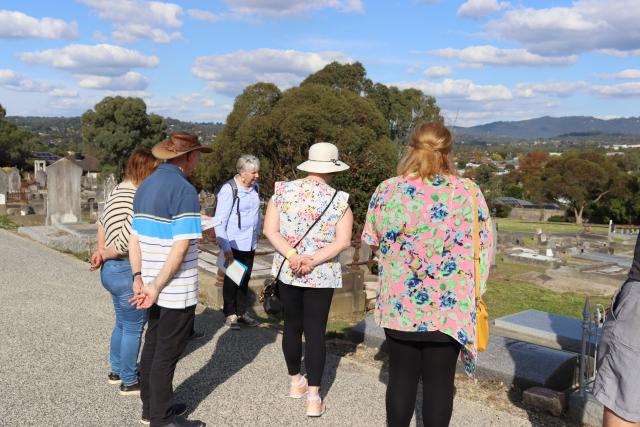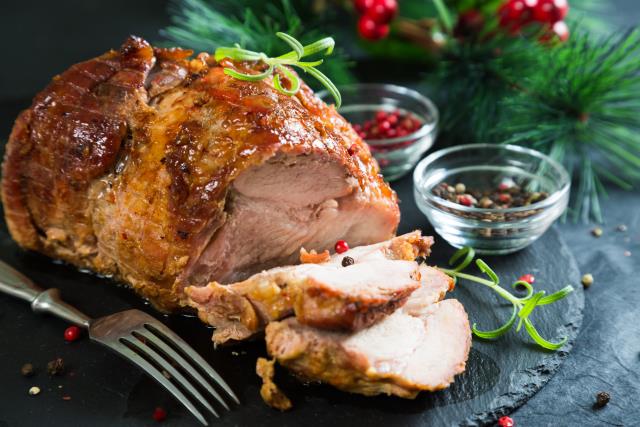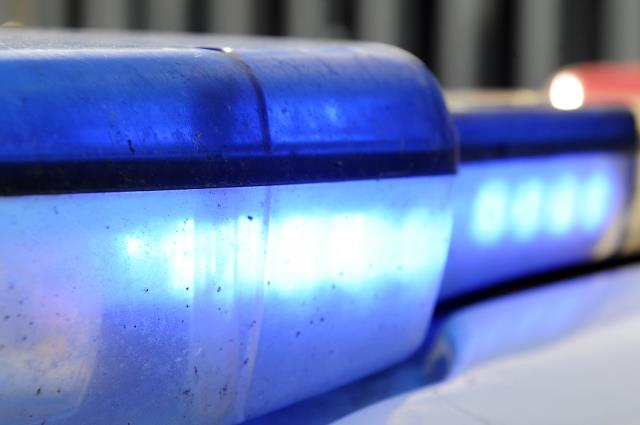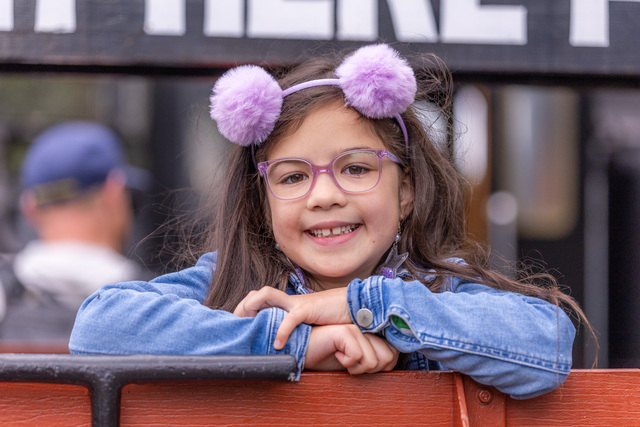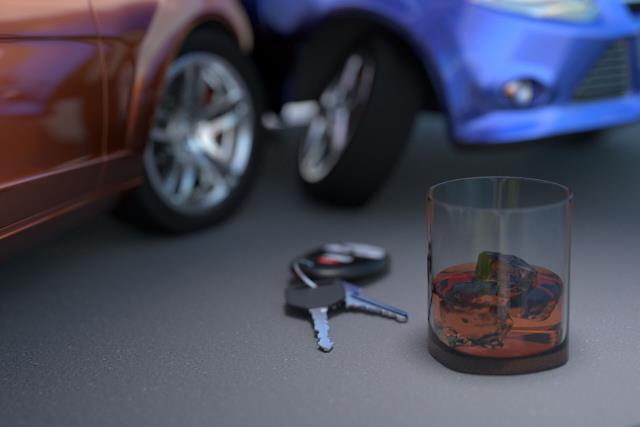Dotted throughout the Lilydale Lawn Cemetery is a history of war, told by the graves of those who fought and survived battles in the 19th and 20th centuries, only to return, leaving lasting legacies.
From the man who helped invent the self-firing rifle to save thousands of Anzacs at Gallipoli to a war widow who helped establish housing for other widows and a Boer War soldier who was lucky not to be trialled with Breaker Morant, the sites and tales vary.
Lilydale and District Historical Society (LDHS) members Kristyn Jackson and Robin Childs led a cemetery tour on Tuesday 25 April to honour and commemorate the soldiers on Anzac Day.
With four volumes of research completed by LDHS and compiled in booklets, Ms Jackson said after stumbling upon one of the booklets, it seemed like the perfect way to spend Anzac Day.
“There’s four volumes, so there’s four cemetery tours and this one’s never been done before, I believe,” she said.
“I found the booklet in a cupboard and this was about two months ago. I thought this would be perfect for Anzac Day.”
The first stop on the tour was to visit Major William Charles Scurry DCM and his wife Dorris Barry, a nurse who served in a number of overseas hospitals, meeting her husband on the ship home.
Major Scurry, born 1895, joined the Senior Cadets as a young man, before enlisting in the AIF as a private in August 1915, joining the shipment of soldiers who landed in Gallipoli.
He and his old schoolmate Private Bunty Lawrence are credited with the life saving effort of creating the self firing rifle, allowing all Anzacs to escape without loss of life in December 1915.
While his service didn’t end there, Major Scurry eventually enjoyed a restful life buying property in Silvan, before living out his last years in Croydon where he died in 1963.
Jessie Mary Vasey, the wife of Major General George Vasey who served in Crete, Libya and the Kokoda Trail during World War II, became a widow in 1945 when her husband died in a civilian aircraft accident off the coast of Queensland.
Understanding then the challenges of other war widows, she established the War Widows’ Craft Guild, as well as establishing housing now valued at over $100 million.
“She understood what women were going through, she set forth to help and so she started up the War Widows Trust to help fight depression and let them know that somebody cared about them and how to survive on their own,” Ms Childs said.
Others noted in the tour included George Elliot who served 10 years in India during the 1850s, William Lawlor, an American Civil War serviceman, Cooring Yering owner William Forbes Hutton, Boer War medal recipient Jack Maffra Moroney and Dame Nellie Melba.
While having a reserve named after him, sometimes little is known about the man behind the name Ralph E Goode.
A stretcher bearer with the 2nd Field Ambulance in the Australian Division during World War I, Lance Corporal Goode served in Gallipoli retrieving the injured and dead from the battlefield, before serving out the rest of the war in France.
“After the war, Ralph returned to Lilydale and married Kathleen Phillips and they had three daughters,” Ms Jackson said.
“He worked tirelessly for the community and in 1954 received an MBE, Member of the British Empire, for services to ex-servicemen and the community. He held office in many organisations, including the Lilydale RSL [and] Lilydale Cricket Club.”
Captain Alexander J H Robertson is also buried in Lilydale, known for his giving of King’s evidence to sentence Captain P P Hunt and Lieutenant H H Breaker Morant for the killings of Boer prisoners and a German missionary.
Back home Robertson was one of the first people to drive over the Black Spur during the construction of the road to Healesville.
He died knowing his name was finally added to the Bathurst Boer War Memorial in 1967.
To end the tour, Ms Childs and Ms Jackson told the stories of four young Vietnam War soldiers who died in battle; Michael John Hannaford, Raymond John Moore, Malcolm Robert Robertson and Gary Ian Willoughby.

